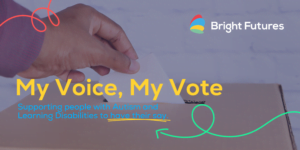Autism Spectrum Disorder (ASD) can impact many ‘typical’ functions we all take for granted. One of these functions is the ability to verbally communicate with others through expressive communication limitations, which can pose huge challenges for the wellbeing of the person with autism.
But there are plenty of methods developed to help those who struggle to speak communicate with those around them. And this is where PECS symbols can come in handy.
The History of PECS symbols
First devised by Lori Frost in 1984, the Picture Exchange Communication System (PECS) was created to be used at the Delaware Autistic Program.
From the point of its inception, the aim of PECS symbols has been clear: to allow people with little or no communicative abilities to communicate using pictures. The result of this was, as was outlined by its original designers, to help develop intentional communication.
In doing so, the negative or concerning behaviours caused by frustration were said to be reduced, and the opportunities available for interaction and learning increased. Fundamentally, the use of these symbols hoped to help those with autism to develop their social skills and, because of this, build meaningful relationships.
How PECS Works
As with all children, those developing their communicative skills with the help of PECS require repetition and ongoing learning to achieve the full effect of the help they can provide. Because of this, practitioners using PECS utilise 6 fundamental phases of learning.
The first of these phases teaches the user ‘how to communicate’. At its core, this stage should teach children to exchange the pictures in front of them for items they really want.
Once the first step has been practised, it is time to move to the next phase: teaching distance and persistence. This phase has been designed to teach children to utilise the skills they learnt in their first phase with new people and in new environments.
Following on from this, phase three of developing the PECS process teaches ‘picture discrimination’. Picture discrimination refers to teaching a young person to select one or two specific images to ask for specific things. Most commonly, the activity or item asked for is a favourite of the child, and the image they choose to use to ask for it is stored for later use.
Phase 4 begins to teach a child about building basic sentence structures. To do this, an ‘I want’ card is utilised followed by an image of a particular item. This stage of the learning process allows the young person to gain some autonomy over the item they are discussing.
Next, phase 5 of the learning process teaches a child to answer the question ‘What do you want?’. Using the simple sentences they had learnt in their previous lessons, this phase helps the young person taking part in the activity to build true communication skills with the person they are working with.
The final stage of teaching a child PECS symbols consolidates the answering questions portion of their learning. Through repetition and increased confidence in the structure of communication available, the child starts to learn how to answer questions like ‘What do you see?’ and ‘What do you hear?’.







